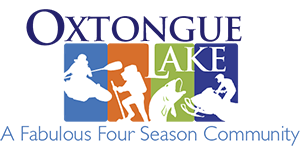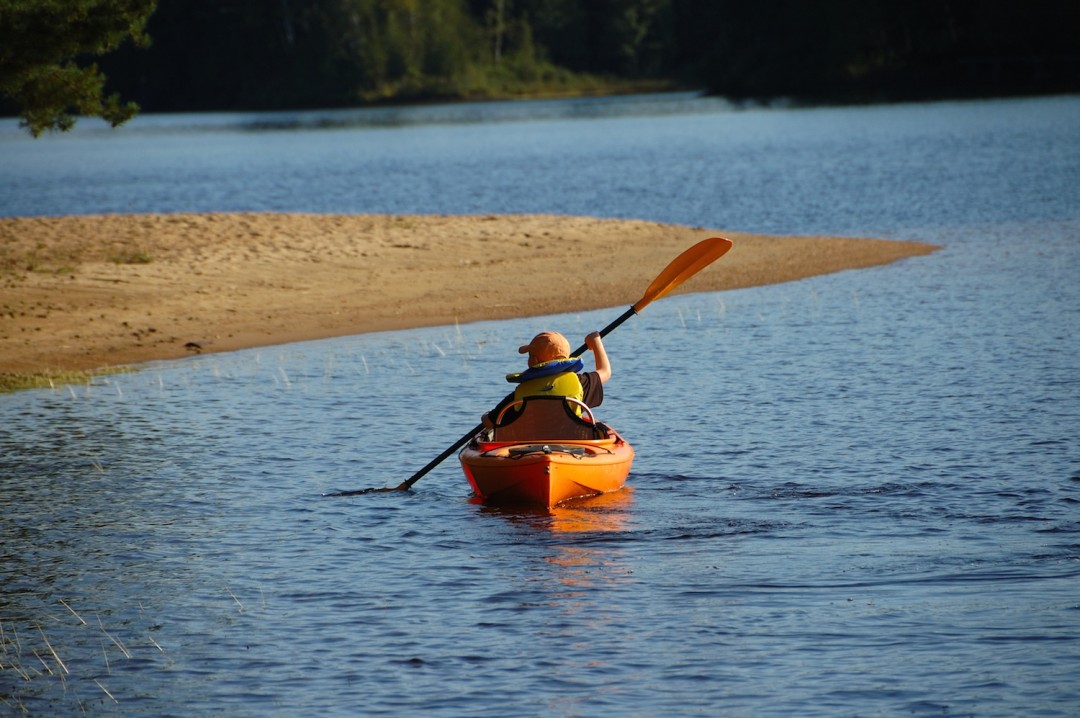Oxtongue while a small lake by some standards, is actually long with lots of nooks and crannies to explore. Whether by motor, canoe, kayak, paddle-board, sailboat, or even the occasional rowing shell, we are blessed with calm waters that make boating a real pleasure – that’s to the detriment of hard-core sailors but a blessing to those of us who love waterskiing. Beginning the day on the dock with a cup of coffee, or ending it with a glass of wine, looking at Oxtongue glass water is not an occasional treat but a regular occurrence.
Wherever you are boating, in no matter what type of boat – please be respectful of your neighbours and wildlife. Maintain a respectful distance from the shore depending on your boat of choice, don’t park or picnic on docks, rafts or people’s private beaches, and try not to tube, jet-ski or wake-board in front of the same docks as much as possible (no one like to have their shore eroded or docks bobbing by the large waves).
North of the Bridge
In the first bay that you see you immediately have a vantage point of one of AJ Casson’s paintings called “Early September, Oxtongue Lake”. Algonquin Outfitters and Swift Canoe Company both have docks in this bay, so those that are renting or taking out a canoe for a test paddle will likely start and end here. Pull on up and go shopping.
Further north from this bay, you will come across a narrows (in fact the bridge used to cross over that narrows before 1933 and you can still see remnants of the old cribs) and once through it, the lake will open up again revealing beautiful rock cliffs, shallow and deep spots for fishing and lots of beautiful crown land at its very north end. The small rivers that runs through this area can be seen further up along the Beetle Lake Trail. A lovely original log cabin used by an early family to Oxtongue Lake sits to the east of the narrows (its origins as a hunt camp called Camp Grumbelnot built sometime between 1890 and 1907) and on the west are permanent homes and cottages.
Towards Ragged Falls
About an 1.5hr paddle from the bridge following the shoreline on the east will bring you to the Oxtongue River leading up to Ragged Falls. This type of boating trip is a true local favourite, there is nothing quite like making that last turn of the river and seeing Ragged Falls in the distance. The river’s level can change drastically depending on the time of year, so please check with locals if you plan on taking a motor boat up the river. Please also be reminded that it’s a no-wake zone in order to protect the wildlife that lives on the edges of the river (not just for the sanity of the people that have homes on the river). Be on the look-out for moose, great-blue herons, beavers and turtles as you make this voyage and hopefully you will be rewarded.
Main Body
There are wide open stretches, bays, inlets, and small islands in the main body of the lake. As you approach the middle of the lake you will notice a cottage/home with a rather open large space. This spot represents a large part of Oxtongue’s history and origins, it was the site of Hubbel’s Mill for logging from 1948-1959. Further south on the west, you will notice an old log cottage with a red roof, known as “Lewis Camp”. This property, still in the same family from Atlanta, Georgia, was purchased in 1902. An interesting fact about the physical cottage, was that it was purchased in 1904 from somewhere on the east side of the lake, disassembled over the winter, skidded across Oxtongue Lake by mules and horses and reassembled in its present location.
Just south of this cottage you will see an opening for the other end of the Oxtongue River. Here you will find our Oxtongue Lake Dam which we ask that you do not disturb. This river then leads through various rapids as it makes its way into Lake of Bays.
South End
The south end of the lake has fewer cottages and becomes shallow in spots. At the very tip there are some plentiful opportunities to see wildlife, perhaps a beaver, great blue heron, moose, or deer at the water’s edge and sometimes a loon nest (if you come across any it is extremely important that you maintain your distance). If the water level is right, and the beavers haven’t had their way, there are some interesting creeks to paddle down and explore. As you approach the south end of the lake you will notice a green boat house on the east side. This property (including the two islands which are their private property) is considered part of a another long-time (1904) family compound known as “Chape Inn”.

